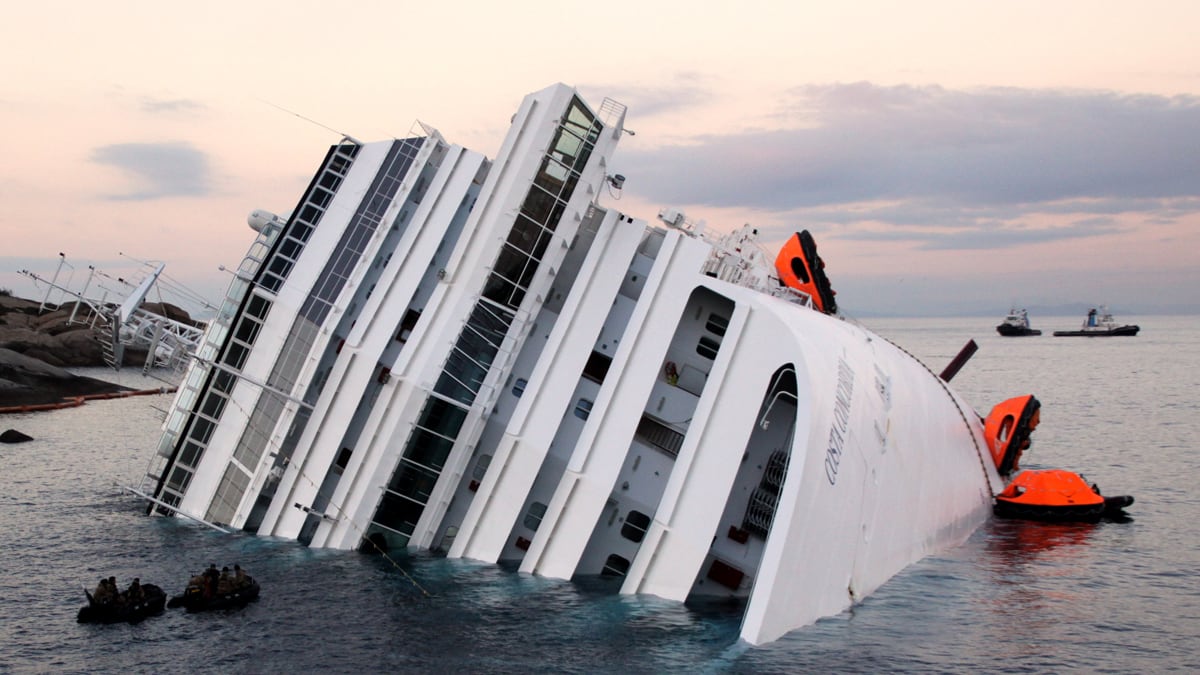Some of my fellow Venetians have a surreal dream: to erect a monument in our beautiful city to Captain Francesco Stecchino, who managed to sink the Costa Concordia off Giglio island last Friday. Strange though it may seem, we owe Stecchino a lot. Because it is only thanks to the Costa Concordia catastrophe that the Italian authorities and the Italian media have suddenly discovered that monster cruise ships are passing through the center of Venice every day. Venice is a harbor built for sailing ships in the age of the Crusades; giant cruise liners just don’t fit. They’re a menace to our fragile city’s unique historical heritage and the equally delicate environment of the Venetian Lagoon.

Until last Friday only the foreign media, some improvised groups of concerned Venetians and a handful of environmentalists had raised the alarm. Now, with images of the giant Costa Concordia wallowing on its side, with its cargo of dead passengers, dominating the airwaves, the whole world has finally woken to the dangers posed by these floating multi-story hotels.
The mega-cruisers began coming to Venice around the year 2000. The length of the ships coming to the city grew from 250 to 300 yards - the length of the Costa Concordia—and now the latest generation of ships is well over 300 yards. Their height dwarfs most of the Venetian bell-towers; when they’re in port they block a large section of the horizon and are visible over the rooftops. The amount of passengers carried by these ships to Venice has increased exponentially from 500,000 in the year 2000 to two million in 2011. Sometimes one can see up to a dozen mega-ships moored at the same time in Venice. They are not only confined to the harbor—they dock in front of the medieval houses near the gardens of the Biennale so that, looking from a distance, it is hard to distinguish if the ship is docked to the city or if it is Venice that is floating and attached to the ship.
The chief prosecutor investigating the Giglio shipwreck told reporters this week that “the ship shouldn’t have gone closer then 150 meters to the island. For a ship of this size that distance is equivalent to a few millimeters.”
In Venice that warning is routinely ignored. For many years ships the size of the Costa Concordia have been passing as close as fifty meters from the Palladian churches or the Doge’s palace. An accident happened in 2004 when the 250-yard-long German cruise ship Mona Lisa ran aground just thirty yards from the Doge’s palace. The mayor of Venice at the time, Paolo Costa, declared that “these ships are dangerous, they should not pass anymore in front of Saint Mark’s square.” Costa is now the President of the Port of Venice, whose stated position on cruise ships is that they should continue to moor at the cruise terminal in Venice.
It’s not just the risk of collisions that makes the passage of the mega-ships through Venice dangerous. These ships use a polluting sort of bunkerfuel, which is harmful to the lungs of the city’s inhabitants. The fuel’s sulphuric content also contributes to the corrosion of the stones of Venice’s monuments. The passage of each of these ships through Venice produces exhaust equivalent to the fumes of 14,000 cars or 2,000 trucks. The San Marco basin is on UNESCO’s list of World Heritage Sites. Would UNESCO allow this kind of traffic through the Valley of the Kings in Egypt or through the middle of Pompeii? I asked this question of Engelbert Ruoss, head of the Venice UNESCO branch. “Certainly not,” he said. “But as strange as it my sound the criteria are enforced in a much stricter way with the new sites on the World Heritage List, in developing nations, rather than with the old ones of the developed world, like in Italy or Spain.”
The ships pose another threat: the huge water displacement caused by the movement of a ship creates immense pressure on the foundations of Venice.
Many parts of Venice are built on wooden poles driven deep into the mud centuries ago. The water pressure the ships cause contributes to washing away the mud particles in which the poles are planted and weakens them.
These huge cruise ships also exercise a sort of violence, perhaps not so tangible but certainly no less real, on the mind of many Venetians. The intrusion of these floating Las Vegases in the heart of our city exacerbates even more our sense that Venice is becoming a theme park for tourists.
And finally the lagoon itself is under threat because the entrance of the mega-ships necessitates the constant dredging and deepening of the harbor channels, which increases tidal flows and disturbs the delicate balance of freshwater and seawater on which the lagoon’s unique ecosystem depends.
It’s not even as if these ships bring some huge economic advantages forVenice and its inhabitants. This kind of tourism just provides the cruising companies with enormous profits. The passengers sleep and consume most of their meals on board. In truth, Venice doesn’t need them. With 20 million visitors every year, Venice, according to recent studies, actually suffers from too much tourism, not too little.
We will see in the next months if Giglio’s catastrophe will bring those charged with safeguarding Venice to their senses. The current mayor of Venice, Giorgio Orsoni, this week promised to form a commission to study the problem in the wake of the Costa Concordia disaster. Depressingly, the Venetian harbor authorities have already stated that a similar accident could not happen in the lagoon because the seabed here is soft and muddy. They forget, however, that the marble with which the architectural geniuses Palladio and Longhena constructed their masterpieces in Venice are as hard as the granite of the reef that opened a 70-yard-wide hole in the keel of the Costa Concordia.






